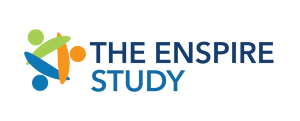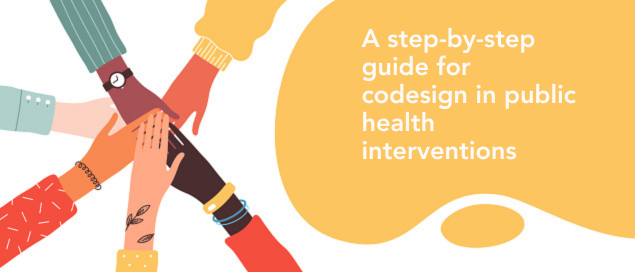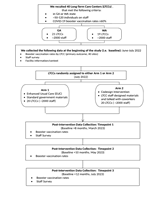The ENSPIRE Study
 The ENSPIRE study used tailored materials to promote the COVID-19 booster to staff in long-term care centers. We wanted to learn: Would these promotional materials — which were created by staff for staff — be more effective than the standard government materials?
The ENSPIRE study used tailored materials to promote the COVID-19 booster to staff in long-term care centers. We wanted to learn: Would these promotional materials — which were created by staff for staff — be more effective than the standard government materials?
ENSPIRE — short for Engaging Staff to Improve COVID-19 Vaccination Response at Long-Term Care Communities — involved 40 centers in Georgia and Washington, including skilled nursing, assisted living, and independent living communities.
Why is this study important?
The COVID-19 vaccine is very effective in preventing severe illness and limiting the spread of the virus, but many people — including long-term care staff — have concerns about getting the vaccine or booster.
How did we conduct the study?
ENSPIRE researchers divided the participating centers into 2 groups. Half the centers received tailored materials designed by long-term care staff in a process called “codesign,” and the other half received standard government materials. The goal was to answer 2 questions:
- Did staff booster rates increase more at the centers that got codesigned materials?
- Were staff more willing to recommend the booster to their coworkers at the centers that got codesigned materials?
-
Please see the study flow diagram, the study protocol paper, or the infographic for a detailed description of the study process.
How did codesign work?
During the codesi gn process, staff from the long-term care centers designed posters, brochures, videos, and other materials to promote the COVID-19 booster vaccine to their coworkers.
gn process, staff from the long-term care centers designed posters, brochures, videos, and other materials to promote the COVID-19 booster vaccine to their coworkers.
Codesign teams of employees from different centers met online once a week for 10 weeks to decide what types of materials to create, what to say in the materials, and what they wanted the materials to look like. Each team included employees who shared the same racial background. Their goal was to create materials that would appeal to other employees of the same background.
After the codesign teams decided what they wanted the materials to say and look like, they gave instructions to a professional communications team to design the materials. The codesign teams then reviewed the materials created by the communications team and gave feedback to create the final materials. Please see the codesign playbook for a detailed description of codesign planning and key considerations for future codesign efforts.
What did we measure?
We measured booster rates by asking each participating long-term care center to tell us how many staff had gotten the booster at 4 different times during the study.
We also asked staff to take a survey, which included a question about how likely they were to recommend the booster to a coworker on a scale of 1 to 10. We asked staff to take the survey at 3 different times during the study.
By asking about booster rates and offering the survey at different times, we were able to see if there were any changes before and after the booster promotion materials were shared.
What did we learn?
Materials designed by staff were not better than government materials at increasing staff booster rates at long-term care centers. They were also not better at increasing staff’s willingness to recommend the booster to their coworkers.
However, we learned many lessons from this study that will help researchers conduct studies with long-term care centers in the future:
- Partnering with administrators and other leaders at long-term care centers throughout the study is critical to ensure that the research activities are doable and successful.
- Obtaining vaccine data from long-term care centers during a pandemic is challenging because of changing government requirements and the workload of administrators and staff. Research teams should plan strategies to minimize the burden of data collection and ensure data quality.
We also learned some lessons about planning codesign in long-term care centers:
- Codesign is a good option for engaging staff in vaccine promotion efforts, as the staff who took part in our codesign enjoyed collaborating to create the materials.
- It is important to consider ways to plan codesign that will make it possible for staff in various job roles to take part. This includes carefully planning the codesign schedule and the time commitment involved.
- Organizing codesign teams based on shared racial identity can create a sense of comfort and connection for the participating staff.
We organized focus groups to hear opinions about the materials from staff who did not take part in codesign. From these groups, we learned several reasons why the codesigned materials may not have been effective:
- Staff had mixed feelings about materials that tried to appeal to their emotions and values.
- Staff wanted more facts about the COVID-19 vaccines.
- Personal experiences with the vaccines and COVID-19 often made staff question the value of the vaccines or the truth of the information they had been given about the vaccines during the pandemic.
We also learned that vaccine promotion efforts might be more successful if they focus on building relationships and trust rather than creating new promotional materials.
Finally, we suggest a few questions for researchers to consider before starting a similar project or research during a pandemic that greatly impacts their community of interest. Ask both your research team and people from this community, especially during a time of rapid change or crisis:
- What are the benefits and drawbacks of doing this research at this time?
- What are the ethical implications of doing this research?
- What are the ethical implications of not doing this research?
What’s next?
We will share this information with researchers, long-term care leaders, public health officials, health systems, and policymakers. We hope they can learn from this study when they are thinking about planning codesign and vaccine promotion efforts.
Learn more about the ENspire study:
- See the ENSPIRE At-a-glance infographic
- Read about the ENSPIRE study design
ENSPIRE Codesign Playbook

Develop a codesign project and process with insights from the ENSPIRE study.



